#Julian Lloyd-Webber
Text

#do you know this musical#musical theater#poll#school of rock#andrew lloyd webber#glenn slater#julian fellowes#language: english
39 notes
·
View notes
Text

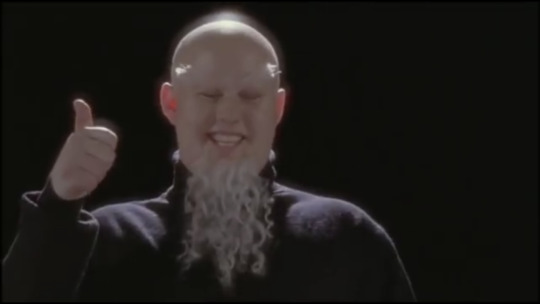

AD/BC a rock opera - 2004 [2/3]
#matt berry#richard ayoade#musical#comedy#britcom#noel fielding#julian barratt#julia davis#matt lucas#andrew lloyd webber#the mighty boosh#ad/bc
15 notes
·
View notes
Text

Happy birthday, Julian Lloyd Webber!
0 notes
Text
youtube
#music loves#classical music#cello#unexpected songs#Julian Lloyd Webber#cellomellow#Faure’s Sicilienne#Youtube
0 notes
Text
The other day I used the phrase "Baron Energy" in conversation.
What, you might ask, do I mean by "Baron Energy "?
Well, these guys are both barons

Andrew Lloyd Webber, Baron Lloyd-Webber

Julian Alexander Kitchener-Fellowes, Baron Fellowes of West Stafford
And whatever it is, they define it.
1 note
·
View note
Text
youtube
My Favorite Things: The Rodgers & Hammerstein 80th Anniversary Concert will be streaming on-demand in North America for one week between Sunday, March 24 through Sunday, March 31, 2024.
The concert stars Joanna Ampil, Michael Ball, Maria Friedman, Daniel Dae Kim, Audra McDonald, Julian Ovenden, Lucy St. Louis, Aaron Tveit, Marisha Wallace and Patrick Wilson, with special appearances by Andrew Lloyd Webber and Rita Moreno.
33 notes
·
View notes
Text

Movie Odyssey Retrospective
The Phantom of the Opera (1925)
By the time French journalist-turned-novelist Gaston Leroux published Le Fantôme de l'Opéra as a serial in 1909, he was best known for his detective fiction, deeply influenced by Sir Arthur Conan Doyle and Edgar Allan Poe. The Phantom of the Opera plays out like a Poe work – teeming with the macabre, painted with one character’s fanatic, violent lust. In serial form and, later, as a novel, Leroux’s work won praise across the West. One of the book’s many fans was Universal Pictures president Carl Laemmle who, on a 1922 trip to Paris, met with Leroux. While on the trip, he read Phantom (a copy gifted to him by Leroux) in a single night, and bought the film rights with a certain actor already in mind.
Laemmle’s first and only choice for the role of the Phantom was about to play Quasimodo in Universal’s 1923 adaptation of Victor Hugo’s The Hunchback of Notre Dame. That actor, Lon Chaney, had subsisted on bit roles and background parts since entering into a contract with Universal in 1912. Chaney, who was about to sign a contract with Metro-Goldwyn-Mayer (MGM), became an instant sensation the moment The Hunchback of Notre Dame hit theaters. Audiences and critics in the early 1920s were simultaneously horrified at the sight of his Quasimodo yet, crucially, felt a profound empathy towards the character.
In his prior films, as well as Hunchback, Chaney separated himself from his fellow bit actors with a skill that almost no other actor in Hollywood possessed: he was also a makeup artist. At this time, actors applied their own makeup – often simple cosmetics or unconvincing facial hair. None of the major Hollywood studios had makeup departments in the early 1920s, and it would not be until the 1940s that each studio had such a department. Chaney, the son of two deaf and mute adults, was also a master of physical acting, and could expertly use his hands and arms to empower a scene. Though already bound for MGM, Chaney could not possibly pass up the role of Erik, the Phantom. Despite frequent clashes with director Rupert Julian (1923’s Merry-Go-Round and 1930’s The Cat Creeps; despite being Universal’s most acclaimed director at this time, Julian was either sacked or walked away mid-production), Chaney’s performance alone earned him his place in cinematic history and, for this film, an iconic work of horror cinema and silent film.
As the film begins, we find ourselves at the Palais Garnier, home of the Paris Opera. The Opera’s management has resigned, turning over the Palais Garnier to new ownership. As the ink dries on the contract and as the previous owners depart, they warn about a Phantom of the Opera, who likes sitting in one of the box seats. Soon after, prima donna Carlotta (Virginia Pearson) receives a threatening letter from the Phantom. She must step aside and allow a chorus girl, Christine Daaé (Mary Philbin), sing the lead role in Charles Gounod’s Faust. If she refuses to comply, the Phantom promises something horrific. Aware of the letter, Christine the next day confers with her loved one, the Vicomte Raoul de Chagny (Norman Kerry), that she has been receiving musical guidance from a “Spirit of Music”, whom she has heard through the walls of her dressing room. Raoul laughs this off, but a series of murderous incidents at that evening’s production of Faust is no laughing matter. Christine eventually meets the shadowy musical genius of the Phantom, whose name is Erik (Chaney). In his subterranean lair, he professes his love to her – a love that will never die.
Rupert Julian’s The Phantom of the Opera also stars Arthur Edmund Carewe as the Inspector Ledoux (for fans of Andrew Lloyd Webber’s musical version, this is the Madame Giry character); Gibson Gowland as Simon Buquet; and John St. Polis as Raoul’s brother, the Comte Philippe de Chagny.
Before extoling this film, one has to single out Mary Philbin and Norman Kerry as the glaring underperformers in this adaptation. Philbin would become a much better actress than she displays here, if The Man Who Laughs (1928) is any indication. Yet, Philbin’s Christine is a blank slate, devoid of much personality and interest. It also does not help that Norman Kerry plays Raoul in a similar fashion. Raoul, in any adaptation of Phantom, tends to be a boring role. But goodness me, for a B-actor who was acclaimed for his tall, dark, and handsome looks and screen persona, he is a charisma vacuum here. During Kerry’s more intimate scenes with Philbin, you may notice that Kerry has a case of “roving hands” when he gets close with Philbin. Philbin, who could not visibly react to these moments on-camera, surreptitiously took Kerry’s hands and held them there to stop the touching.
Philbin is much better when sharing the screen opposite Chaney. Chaney and Philbin both could not stand director Rupert Julian – whom both actors, as well almost all of the crew, regarded as an imposing fraud who knew little about making art and more about how to cut costs (Laemmle appointed Julian for this film in part due to Julian’s reputation for delivering work under budget). There are unconfirmed accounts that after Julian’s departure or removal from Phantom, Chaney himself directed the remainder of the shoot aside from the final climactic chase scene (which was the uncredited Edward Sedgwick’s responsibility). In any case, Philbin’s terror when around Chaney was real. The sets of the Phantom’s lair reportedly spooked her – the subterranean waterways, his inner sanctum. Philbin also received no preparation before the filming of what is now one of the signature moments of the silent film era and all of horror cinema. Her reaction to Lon Chaney’s self-applied makeup – meant to appear half-skin, half-skeletal – was the first time that she saw Chaney’s Phantom in all his gruesomeness. Philbin, freed of the innocent, pedestrian dialogue of the film’s opening act, gifts to the camera one hell of a reaction, fully fitting within the bounds of silent film horror.
There are conflicting records on how Chaney achieved the Phantom’s final appearance. The descriptions forthcoming are the elements that freely-available scholarship generally accepts as true. It appears that Chaney utilized a skull cap to raise his forehead’s height, as well as marking deep pencil lines onto that cap to accentuate wrinkles and his brow. He also raised his cheekbones by stuffing cotton into his cheeks, as well as placing a set of stylized, decaying dentures. Inner-nasal wiring altered the angle of his nose, and white highlights across his face contributed to his skeletal look for the cameras. Cinematographer Charles Van Enger (1920's The Last of the Mohicans, uncredited on 1925's The Big Parade) – who, other than Chaney, was one of the most familiar onset with Chaney’s makeup – claimed that the nasal wiring sometimes led to significant bleeding. Taking inspiration from Chaney’s approach to keeping the makeup artistry hidden from Philbin and others, Universal kept the Phantom’s true appearance a secret from the public and press. The studio advised movie theaters to keep smelling salts ready, in case of audience members fainting during the unmasking scene. According to popular reporting at the time, audience members did scream and faint upon the reveal; a nine-year-old Gregory Peck’s first movie memory was being so terrified of Lon Chaney’s Phantom, that he asked to sleep with his grandmother that evening after he came home.
youtube
Lon Chaney’s tremendous performance allows The Phantom of the Opera to soar. Arguably, it is his career pinnacle. Masked or unmasked, Chaney’s Phantom dominates the frame at any moment he is onscreen aside from the film’s final chase sequence. Whether glowering over Christine, majestically gesturing in silhouette, strutting down the Opera House steps during the Bal Masqué, or tucked into the corner of the frame, Chaney’s physical presence draws the audience’s eyes to whatever he is doing. The differences in posture from before and after the unmasking scene are striking – from an elegant specter to a broken, hunched figure (appearing to draw some inspiration from his experience playing Quasimodo two years earlier) seething with pent-up carnality, rage, and sorrow. Chaney’s Phantom garners the audience’s sympathy when he gives Christine the grand tour of his chambers. Look at his posture and hands when he mentions, “That is where I sleep,” and, “If I am the Phantom, it is because man’s hatred has made me so.” That Chaney can ease through these transitions and transformations – as well as a third transformation, as the Red Death during the Bal Masqué – so naturally, without a misstep, is a testament to his acting ability.
Underneath the tortured and twisted visage of a man who has committed horrific acts is a vulnerable and misguided human being. His dreams, dashed and discarded by all others, have turned to despicable means. The role of the Phantom plays brilliantly to Chaney’s genius: to have audiences sympathize with even the most despicable or despondent characters he played. Chaney accomplishes this despite this film characterizing the Phantom with less sympathy than Leroux’s original novel and the popular Andrew Lloyd Webber musical.
This is already on top of Charles Van Enger’s camerawork; the sharp editing from a team including Edward Curtiss (1932’s Scarface) Maurice Pivar (1923’s The Hunchback of Notre Dame), Gilmore Walker (1927’s Uncle Tom’s Cabin), and Lois Weber.
Weber, who in 1916 was Universal’s highest-paid director, underwent numerous financial difficulties over that decade. One of Hollywood’s first true auteurs and largely ignored in the history of film until recently, Weber formed her own production company with Universal’s assistance in 1917, off the success of Shoes (1916). Through World War I, Weber’s movies were popular until around the turn of the decade, when her “didactic” filmmaking (a result of her devout Christian upbringing) went out of style. Most visibly among Weber’s financial failures of the early 1920s, The Blot (1921) – a movie that scholars and Weber himself considered her best – flopped in theaters. After two hiatuses from filmmaking in the early 1920s, Weber was brought in to conduct the final bits of editing on The Phantom of the Opera before returning to directing under Universal.
Though none of the film’s production designers were yet to hit their peak, The Phantom of the Opera benefitted from having a soon-to-be all-star art department including James Basevi (1944’s The Song of Bernadette), Cedric Gibbons (almost any and all MGM movies from 1925 onward), and Robert Florey (1932’s Murders in the Rue Morgue). Inspired by designs sketched by French art director Ben Carré, the production design trio spared no expense to bring Carré’s illustrations to life and used the entirety of Universal’s Soundstage 28 to construct all necessary interior sets. The set’s five tiers of seating and vast foyer needed to support several hundred extras. So unlike the customary wooden supports commonplace during the silent era for gargantuan sets, The Phantom of the Opera’s set for the Palais Garnier became the first film set ever to use steel supports planted into concrete. Basevi, Gibbons, and Florey’s work is glorious, with no special effects to supplement the visuals. The seventeen-minute Bal Masqué scene – which was shot in gorgeous two-strip Technicolor (the earliest form of Technicolor, which emphasized greens and reds) – is the most striking of all, unfurling its gaudy magnificence to heights rarely seen in cinema.
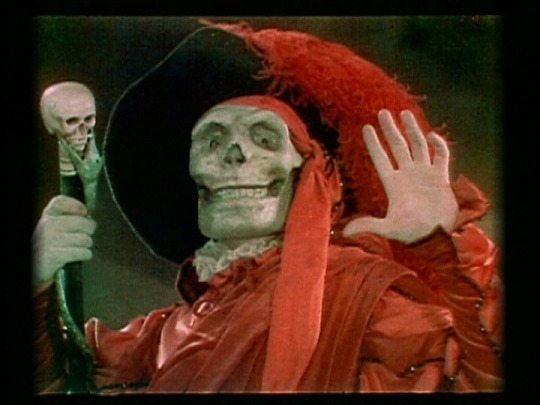
Universal’s Soundstage 28 was an integral part of the VIP tour at Universal Studios Hollywood for decades. Though the orchestra seats and the stage of the film’s Palais Garnier had long gone, the backside box seats of the auditorium remained. Stage 28 featured in numerous films after The Phantom of the Opera, including Dracula (1931), the Lon Chaney biopic Man of a Thousand Faces (1957), Psycho (1960), Charade (1963), Jurassic Park (1993), How the Grinch Stole Christmas (2000), and The Muppets (2011). The soundstage was also supposedly haunted, with individuals claiming to see a caped figure (Lon Chaney as the Phantom?) running around the catwalks, lights flickering on and off, and doors opening and closing on their own. In 2014, after standing for almost ninety years, Universal decided to demolish Stage 28 so as to expand its theme park. However, the historic set escaped the wrecking ball, as Universal decided to disassemble the set, place it into storage, and perhaps someday reassemble it. It is a fate far kinder than almost all other production design relics from the silent era.
Unlike what was coming out of Weimar Germany in the 1920s in the form of German Expressionism, American horror films had no template to follow when The Phantom of the Opera arrived in theaters. There would be no codification of American horror cinema’s tropes and sense of timing until the next decade. But without 1925’s The Phantom of the Opera, Universal would never become the house of horror it did in the 1930s through the early ‘50s (including the Dracula, Frankenstein, Mummy, Invisible Man, Wolf Man, and Creature from the Black Lagoon series). So, unbound by any unwritten guidelines, 1925’s The Phantom of the Opera – a horror film, but arguably also a melodrama with elements of horror – consumes the viewer with its chilling atmosphere and, from Lon Chaney, one of the best cinematic performances ever, without any qualification. For silent film novices, this is one of the best films to begin with (outside the comedies of Charlie Chaplin, Buster Keaton, and Harold Lloyd). Regardless of one’s familiarity with silent film, The Phantom of the Opera is a cinematic milestone.
My rating: 9.5/10
^ Based on my personal imdb rating. My interpretation of that ratings system can be found in the “Ratings system” page on my blog. Half-points are always rounded down.
For more of my reviews tagged “My Movie Odyssey”, check out the tag of the same name on my blog.
This is the twenty-third Movie Odyssey Retrospective. Movie Odyssey Retrospectives are reviews on films I had seen in their entirety before this blog’s creation or films I failed to give a full-length write-up to following the blog’s creation. Previous Retrospectives include Dracula (1931 English-language version), Oliver! (1968), and Peter Pan (1953).
#The Phantom of the Opera#Rupert Julian#Lon Chaney#Mary Philbin#Norman Kerry#Carl Laemmle#Gaston Leroux#Ernst Laemmle#Edward Sedgwick#Arthur Edmund Carewe#Gibson Gowland#Snitz Edwards#Virginia Pearson#Edward Curtiss#Maurice Pivar#Gilmore Walker#Lois Weber#silent film#TCM#My Movie Odyssey
6 notes
·
View notes
Text
youtube
Sonata for Cello and Piano by Peter Racine Fricker (1920-1990) performed by Julian Lloyd Webber and John McCabe
2 notes
·
View notes
Text
Frostverse Sountrack!
This post will get updated as I think of stuff <3 <3 <3 Some of these have full spotify playlists! Ask if you'd like the link.
The Family
-You're Dead by Norma Tanega
-Our House by Madness
-Our Word by Jessie Shelton
-Finale Ultimo (Don't Feed The Plants) from the Little Shop of Horrors Soundtrack
-Schadenfreude from Avenue Q
-----------------------------------------
Individuals
Suzy
-Dive Into The Madness by Dan Bull
-Sabbath Bloody Sabbath by The Cardigans
-Happy Meal II by The Cardigans
-Step On Me by The Cardigans
-Stuff Is Way by They Might Be Giants
-The Ballad Of Jane Doe by Emily Rohm
-Skinned by Blind Melon
-She's Not There by The Zombies
-Killer Queen by Queen
-Suburbia Overture/Greetings from Mary Bell Township!/Vampire Culture by Will Wood
-Halloweenie IV: Innards by Ashnikko
-Nuttin For Christmas by Art Mooney and Barry Gordon
-Suzy Snowflake by Rosemary Clooney
-I Want A Hippopotamus for Christmas by Gayla Peevey
-Frosty the Snowman by The Ronettes
-They're Coming To Take Me Away by Sloppy Jane
-Tonight You Belong To Me by Patience and Prudence
-Alive by Anthony Warlow
-Valley Girl by Frank Zappa and Moon Zappa
-Screw Loose by Ali Mauzey
-The Red Means I Love You by Madds Buckley
-The End Of The World by Skeeter Davis
-I Will Follow Him by Peggy March
-Stand By Your Man by Tammy Wynette
-I'm A Woman by Peggy Lee
-Batty Rap by Robin Williams
-Sweet Bod by Lemon Demon
-You Ain't Woman Enough by Loretta Lynn
-Lights On by Kyle Allen Music
-Livin' in the Sunlight, Lovin' in the Moonlight by Tiny Tim
-Cold Island by My Singing Monsters
-Thermodynamic Lawyer by Will Wood
Virginia
-Break Stuff by Limp Biskit
-Right Now by Korn
-Scars by Papa Roach
-Pity Party by Melanie Martinez
-Habits (Stay High) by Tove Lo
-Somewhere Only We Know by Keane
-Dark Red by Steve Lacy
-Creep by Radiohead
-Tears In Heaven by Eric Clapton
-Girls by MARINA
James
- My Ordinary Life by The Living Tombstone
-Biggering by The 88
-Dead To Me by Kali Uchis
-Take A Slice by Glass Animals
-Apex Predator by Barrett Wilbert Weed
-World Burn by Taylor Louderman
-Killer Instinct from Bring It On: The Musical
-ROXANNE by Arizona Zervas
-Competition by Azealia Banks
-Applause by Lady Gaga
-Coin-Operated Boy by The Dresden Dolls
-Don't Mess With Me by temposhark
-Everybody Loves Me by OneRepublic
-King Herod's Song by Mike D'Abo
-Feast or Famine by Starkid Productions
-Let's Have A Battle by The Dazzlings
-Under Our Spell by The Dazzlings
-When You're Evil by Aurelio Voltaire
-The Ugly Truth by Nick Jonas
-Venus Fly Trap by MARINA
-Call Me Cruella by Florence + The Machine
-Land of the Dead by Aurelio Voltaire
-Toxic Love by Tim Curry
-The Hills by The Weeknd
-The King of Villains by Aurelio Voltaire
-The Main Character by Will Wood
-Killing Spree by Matt Smith
-Not A Common Man by Matt Smith
-Ultraluminary by Phillipa Soo
-I Know Him by Johnathan Groff
-Ambrosia Wine by Madds Buckley
-Fabulous by Phineas
-Be Prepared by Jeremy Irons
-Fabulous by Sharpay Evans
-Watch Me Work by Brianna Mazzola
-Paint The Town Red by Doja Cat
-Primadonna by MARINA
Janet
-Money, Money, Money by ABBA
- Jump In the Line by Harry Belafonte
-Dance The Night by Dua Lipa
-Blame It On The Boogie by The Jackson 5
-Move Your Feet by Junior Senior
-Super Freak by Rick James
-Girls Just Want To Have Fun by Cyndi Lauper
-I Wanna Dance with Somebody by Whitney Houston
-Primadonna by MARINA
-Fancy by Reba McEntire
-I Squeezed Out A Baby, Yet I Have No Idea Who The Father Is by Masuna
January
- I'm A Princess by Bill Wurtz
Julian
-1985 by Bo Burnham
Justin
-Girls by The Beastie Boys
-Monsta Mack by Sir Mix-A-Lot
-Lips of an Angel by Hinder
Kimberly
-Twisted by The Original Starkid Cast of Twisted
-No Good Deed by Idina Menzel
-Gethsemane by Andrew Lloyd Webber
Drusilla
- Northern Downpour by Panic! at the Disco
-Nine in the Afternoon by Panic! at the Disco
-----------------------------------------
Character Relationships
Jack and Suzy
-Chapel Of Love by The Dixie Cups
-Today I Met The Boy I'm Gonna Marry by Darlene Love
-Be My Baby by The Ronettes
-I'm Into Something Good by Herman's Hermits
-Hopelessly Devoted To You by Olivia Newton-John
-Uptown Girl by Billy Joel
-Screw Loose by Alli Mauzey
-Me And My Husband by Mitski
-Pavlov by Kate Douglas
-The Horror Of Our Love by Ludo
-Running On A Treadmill by Oingo Boingo
-Accidentally In Love by Counting Crows
-An Unhealthy Obsession by The Blake Robinson Synthetic Orchestra
-Under My Thumb by The Rolling Stones
-Stalkers Tango by Autoheart
-I Will Possess Your Heart by Death Cab for Cutie
-Poisoning Pigeons in the Park by Tom Lehrer
-Obsessed With You by The Orion Experience
-I Hold Your Hand In Mine by Tom Lehrer
-I Only Want To Be With You by Dusty Springfield
Santa and Virginia
- Everlong by The Foo Fighters
- Cirice by Ghost
- Electric Love by BORNS
-Do I Wanna Know? by The Arctic Monkeys
- Love The One You're With by Crosby, Stills & Nash
-Lucky by Collbie Calliat
-Animals by Nickelback
Jack and Santa
-Eddie Baby by Felix Hagan and The Family
-Lay All Your Love On Me by ABBA
-I WANNA BE YOUR SLAVE by Maneskin
-Wrecking Ball by Mother Mother
-Curses by The Crane Wives
-Angel Of Small Death And The Codene Scene by Hozier
-Arsonist's Lullabye by Hozier
-Just The Two Of Us by Bill Withers
-Like Real People Do by Hozier
-Iris by The Goo Goo Dolls
James and Rudy
-Cooler Than Me by Mike Posner
-The Masochism Tango by Tom Lehrer
-Smooth by Santana and Rob Thomas
Justin and Mercy
- Love Grows by Edison Lighthouse
- Once Shattered, Now Whole by Brian D'Arcy
- Glimpse Of Us by Joji
- I Think I Love You by The Partridge Family
- There She Goes by The La's
-Talia by Chaz Duffy
Jasmine and Jeremy
-Nothing Left To Lose by Jeremy Jordan
-Crossing The Line by Mandy Moore
-Good For You by Rachael Bay Jones
-Nothing Good by Lea Salonga
-Fish In A Birdcage by Fish In A Birdcage
---------------------------------------
#the frosts#the frost family#the frost kids#character playlist#universe soundtrack#character soundtrack#soundtrack#oc soundtrack#oc playlist
5 notes
·
View notes
Text
Llega a Madrid 'School of Rock', el musical familiar de Andrew Lloyd Webber
Nunca creí que veríamos el día en el conservador Andrew Lloyd Webber, y el Julian Fellowes de Downton Abbey, animarían a un grupo de gente joven a cometer un acto de desafío. Pero aquí estamos, porque las canciones de School of Rock son de Lloyd Webber y Glenn Slater, mientras que el libreto corre a cargo de Fellowes.
La historia sigue la historia de Dewey Finn (Leo Rivera), un apasionado del…

View On WordPress
2 notes
·
View notes
Text
What our beloved ghosts are listening to this Halloween!
Captain: Zombie - The Cranberries/Monster - Lady Gaga/Ghost - Halsey

Pat: Monster Mash - Bobby Pickett/Ghostbusters - Ray Parker Jr/Somebody’s Watching Me - Rockwell

Kitty: Calling All The Monsters - China Anne McClain/I Put A Spell On You - Bette Midler/I’m In Love With A Monster - Fifth Harmony
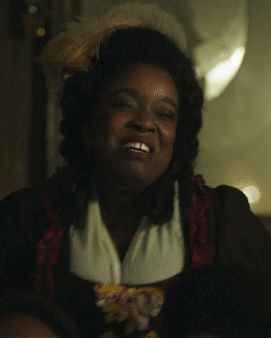
Julian: Thriller - Michael Jackson/Time warp - Rocky Horror Picture Show/Witchcraft - Frank Sinatra
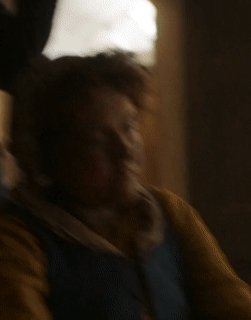
Robin: The Addams Family - Vic Mizzy/Maneater - Nelly Futado/Bury A Friend - Billie Eilish
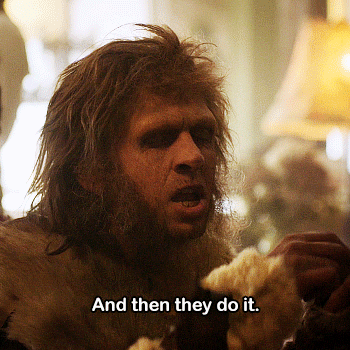
Fanny: Ultraviolence - Lana Del Rey/Hounds of Love - Kate Bush/Get Out Of My House - Lana Del Rey

Humphrey: This is Halloween - Nightmare Before Christmas/ Jack’s Lament - Nightmare Before Christmas/Heads Will Role - Yeah Yeah Yeahs

Thomas: The Phantom Of The Opera - Andrew Lloyd Webber/Haunted - Taylor Swift/Every Breath You Take - The Police
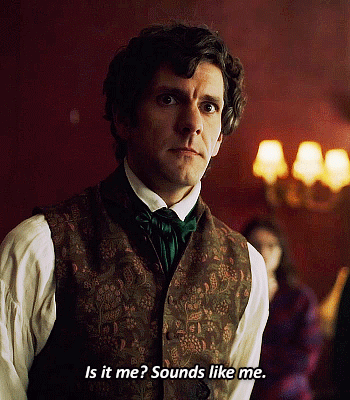
#bbc ghosts#thomas thorne#the captain#pat butcher#julian fawcett#fanny button#humphrey bone#robin bbc ghosts#kitty bbc ghosts
18 notes
·
View notes
Text
0 notes
Text
ESTHER ABRAMI

CINÉMA
Disponible en CD, vinilo y digital el 22 de septiembre.
Consíguelo AQUÍ
Para Cinéma la violinista e influencer ha reunido algunas de las piezas musicales de sus películas y series favoritas. El álbum incluye nuevos arreglos de temas de grandes éxitos de taquilla como “Los juegos del hambre”, “The Witcher” y “Demon Slayer” pero también de películas muy personales como el drama ganador de un Oscar "La vita è bella", el clásico francés "Les Chorists" o "El diario de Ana Frank". Además, Cinéma incluye tres piezas clásicas tradicionales que se hicieron populares como bandas sonoras de películas y dos composiciones totalmente nuevas de Anne Dudley y Rachel Portman.
El primer single "Naruto: Alone Theme" se lanza con la reserva del álbum el 28 de abril. Se trata de un nuevo y exquisito arreglo para orquesta del tema más famoso del éxito mundial del anime "Naruto", ¡uno de los amines más populares de todos los tiempos!
En todos los temas de Cinéma, Esther Abrami se acompaña de la Orquesta Filarmónica de la Ciudad de Praga y del director Ben Palmer, ¡excepto en dos grabaciones muy especiales! En "Libertango" de Astor Piazzolla, el guitarrista Marcin se une a Esther Abrami para crear una nueva versión espectacularmente dinámica, y para la grabación del clásico de Yann Tiersen "Comptine d'un autre été, l'après-midi", Esther Abrami utiliza múltiples capas de violín para acompañarse a sí misma.
Sobre Esther Abrami
En 2019, Esther Abrami se convirtió en la primera música clásica nominada en la categoría de Estrella de las Redes Sociales en los Global Awards. A través de TikTok e Instagram ha dado la bienvenida a todo un nuevo público a su mundo musical, compartiendo vídeos de práctica y lectura a primera vista junto con consejos y técnicas útiles para jóvenes aspirantes a músicos. Hasta la fecha, su pasión por la música ha unido a más de 295.000 seguidores en TikTok, 241.000 seguidores en Instagram y 125.000 seguidores en YouTube.
Se siente tan a gusto en el mundo clásico como cuando interpreta éxitos modernos o se reta a sí misma a aprender a tocar canciones en una hora solamente. Esther Abrami estudió en el Royal College of Music y obtuvo una beca completa para cursar un máster en el Conservatorio Real de Birmingham. Toca un magnífico violín Jean-Baptiste Vuillaume, que le ha sido prestado amablemente a través de la Beare's International Violin Society.
Incluida en la lista de Julian Lloyd Webber como una de las "30 artistas clásicas menores de 30 años a seguir" de Classic FM, Esther va camino de ser reconocida como una de las jóvenes artistas de música clásica más prometedoras de su generación. Con más de 300.000 visitas a su último single y un esperado álbum de debut en camino, Esther se ha convertido rápidamente en una nueva artista a tener en cuenta más allá del género clásico.
0 notes
Text
Echo Youth Theatre's Rocking School of Rock
If you’d said a few years back that one day I’d be in a small provincial theatre watching a bunch of kids bounce about in a Lloyd Webber musical with a book by Julian Fellowes (he of Downton Abbey fame), I’d have laughed you off the stage. “Not my thang,” I would have said. “Give me Superstar and maybe Coat of Many Colours, but his other stuff? Nah, not for me.”
But there I was last night…

View On WordPress
0 notes
Text
How Julian Lloyd Webber met Jiaxin Cheng: ‘I said: Would you consider trying life in England?’
Cellists Lloyd Webber, 71, and Cheng, 48, met while he was on tour in New Zealand. She eventually moved to the UK, where the couple now live. They married in 2009
It wasn’t until the third time Julian Lloyd Webber and Jiaxin Cheng met that the idea of a romantic relationship seemed a possibility. The first time, in 2000, Julian, the celebrated cellist, was on tour in New Zealand, and Jiaxin was one of a number of music students invited to hear him rehearse. Born in China, Jiaxin had graduated from the Shanghai Conservatory of Music, and was doing a master’s degree at Auckland University. “Our teacher took us backstage to say hello,” she says.
Julian got her email address, and contacted her two years later when he was on tour in the country again to ask if she was still in New Zealand, adding that he might need her technical help with a concert that was going to be broadcast. By then, Jiaxin had graduated and was playing in the Auckland Philharmonia and the New Zealand Symphony Orchestra. “At rehearsal, the sound wasn’t good and I asked Jiaxin if she could come and listen,” says Julian. “Being a cellist herself, she was very helpful, and I was able to get a good recording.” Continue reading... http://dlvr.it/SfqLw8
0 notes
Text
Global to produce five classical music programmes for Sky Arts – ATV Today
Global to produce five classical music programmes for Sky Arts – ATV Today
Sky has commissioned Global, the media & entertainment group, to produce five shows for its dedicated creative arts channel, Sky Arts, as part of a multi-year production agreement.
Following the success of its first TV performance, Global will produce two further episodes of Classic FM’s Rising Stars with Julian Lloyd Webber, a show that champions and gives a stage to exciting, up and coming…

View On WordPress
0 notes